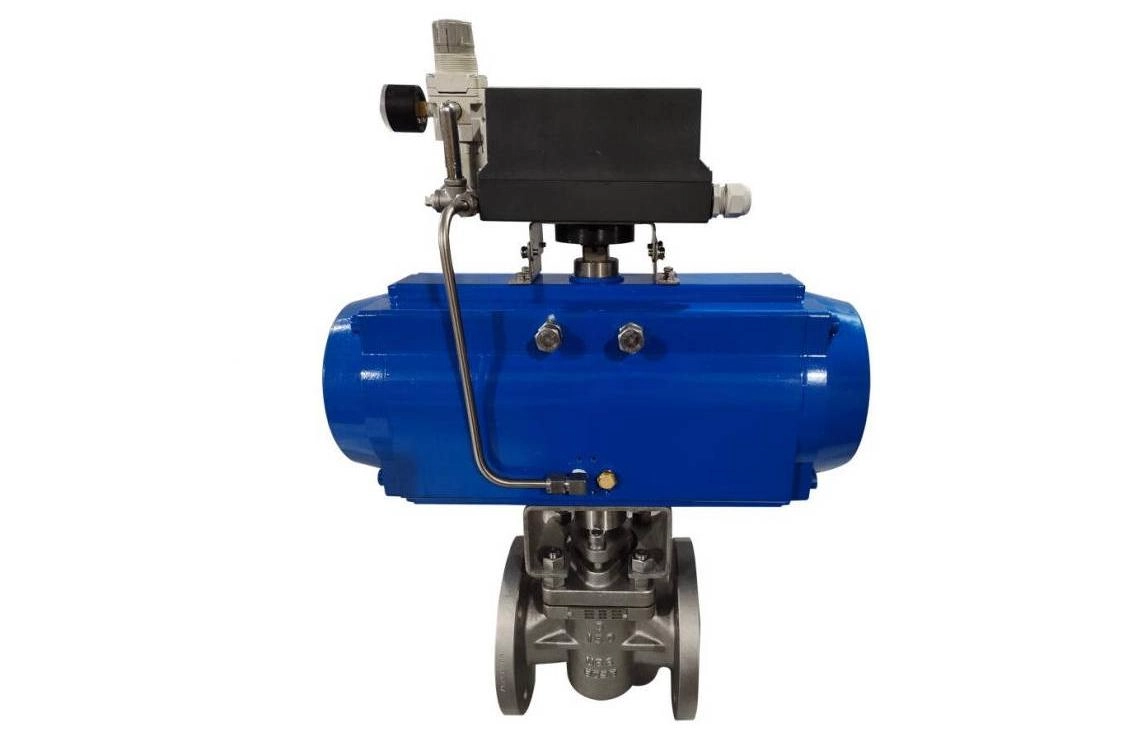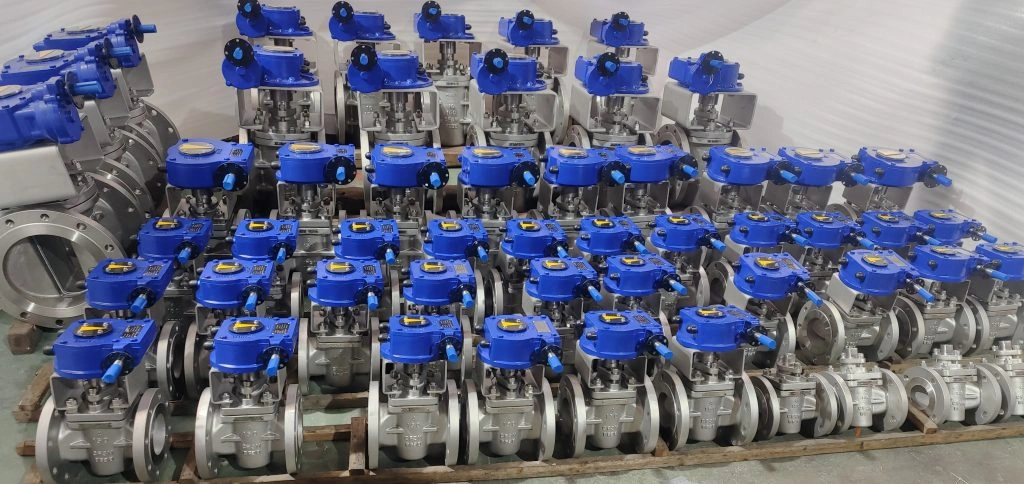Identifying Oil Plug Valves: Key Characteristics and Features Explained

How to Identify a Plug Valve?
Getting to Know Plug Valves
A plug valve is a handy tool for managing fluid flow. It uses a cylindrical or slightly tapered plug. This plug has hollow channels inside. When these channels line up with the valve’s openings, fluid can pass through. These valves are great for quick tasks. They create a solid seal. The valve’s body holds the plug, which spins to open or block the flow.
Its structure is relatively simple and therefore simple to identify. It typically consists of three fundamental components: the body, the plug, and the stem. Plugs may be lubricated or not, depending on their function and design. Those that are not must contain a sleeve or liner within for reducing friction.
Materials That Make Plug Valves
Plug valves are built from all sorts of materials. The choice depends on what they’re used for and where. You’ll often see stainless steel, carbon steel, brass, or ductile iron. For tough jobs, like handling corrosive stuff or extreme heat, they might use special materials like Hastelloy, Inconel, or PTFE-lined plugs.
Stainless steel is a favorite because it’s strong and doesn’t rust easily. It’s perfect for oil and gas work. Carbon steel is tough and budget-friendly, though it might need a coating to fight rust. Brass is great for low-pressure jobs since it’s easy to shape and resists corrosion decently.
What Makes Plug Valves Different?
Plug valves aren’t like ball, gate, or butterfly valves. They work and look unique. Ball valves use a round piece to control flow. Plug valves, though, use a cylindrical or conical plug. Gate valves lift a barrier to let fluid through. Plug valves just rotate to seal.
Butterfly valves have a disc that swings in the flow path. They don’t always seal as tightly as plug valves. Plug valves are compact and quick to use, which makes them stand out in systems needing fast on-off action.
What is the Purpose of Oil Plug Valves?
How Oil Plug Valves Manage Flow
Oil plug valves are key players in industrial systems. They handle fluids in pipelines carrying crude oil, refined products, or hydrocarbons. By turning the plug, workers can start, stop, or tweak the flow smoothly.
These valves are designed to keep leaks at bay, even under intense pressure. That’s why they’re a must in oil refineries, chemical plants, and offshore platforms for safety and efficiency.
Why Oil Plug Valves Rock in Industry
Oil plug valves bring a lot to the table for industrial work:
- Speedy Use: A quick quarter-turn opens or closes them fast.
- Tight Seal: They’re great at stopping leaks, which is crucial in risky settings.
- All-Purpose: They can deal with all kinds of fluids, even those with bits of solid stuff.
- Tough Build: Made from strong materials like stainless or carbon steel, they handle rough conditions.
- Low Hassle: Their simple setup means less time fixing them compared to fancier valves.
Standout Features of Oil Plug Valves
How They Seal So Well
Sealing is a big deal for oil plug valves. Lubricated ones use grease in grooves around the seat to seal better and wear less. Non-lubricated ones rely on liners made of materials like PTFE or elastomers. These liners make a snug seal without needing extra grease.
Good sealing means no leaks, even with tricky or dangerous fluids under pressure.
Port Options in Oil Plug Valves
Full Port vs. Reduced Port
Oil plug valves come with different port styles for different needs:
- Full Port: The valve’s inner size matches the pipeline’s. This keeps pressure steady.
- Reduced Port: The inner size is smaller, causing a bit of pressure drop but saving on materials.
Choosing one depends on the system’s needs and budget.
Staying Strong and Easy to Care For
Oil plug valves are built to last. They deal with high pressure and harsh fluids all the time. Maintenance means checking seals and liners for wear. Lubricated valves need grease checks now and then.
Non-lubricated ones are easier to maintain since they don’t need grease. Still, regular checkups are important to keep them reliable in tough industrial jobs. Downtime can hit the wallet hard.
Where Oil Plug Valves Shine
Plug Valves in the Oil World
Plug valves are stars in the petroleum industry. They control crude oil, refined products, and natural gas. Their strong sealing and high-pressure handling make them essential. You’ll see them in pipelines, storage tanks, and refineries, keeping hydrocarbons moving safely.
They’re super versatile. They can handle fluids with solids or gritty particles, like slurries. Their quick turn-on or turn-off is a lifesaver during emergencies or maintenance.
They’re also built to last. Materials like stainless or carbon steel stand up to corrosion and extreme conditions. This means fewer replacements and less upkeep, saving money over time.
Why Chemical Plants Love Plug Valves
In chemical processing, plug valves are trusted for their strength and resistance to nasty chemicals. They handle acids, alkalis, solvents, and other harsh stuff. Non-lubricated designs with PTFE or elastomer liners are perfect for these chemicals and cut down on leaks.
A tight seal is everything in chemical plants. Even tiny leaks can cause big safety or environmental problems. Plug valves’ straightforward design keeps leaks to a minimum, even under pressure.
They also come with flexible port options. Full port valves are great for jobs needing steady pressure. Reduced port ones save money when a little pressure loss is okay.
Miwival’s Take on Oil Plug Valves

What Makes Miwival’s Valves Special
Miwival’s oil plug valves are crafted for the oil industry’s needs. Our sealing systems are top-notch. We offer lubricated and non-lubricated versions. Lubricated ones use grease in grooves to seal tightly and reduce wear. Non-lubricated ones use high-quality PTFE liners for a solid seal without grease.
These valves thrive in high-pressure settings, like those in oil extraction or refining. They keep things safe and reliable in tough spots.
Miwival also lets you pick port setups. Full port designs boost flow efficiency. Reduced port ones are kinder to the budget. We tailor solutions to fit specific systems.
Why Choose Miwival’s Valves?
Miwival’s oil plug valves come with perks that boost efficiency and safety:
- Super Durable: Built from tough materials like stainless or carbon steel, they resist rust and wear, lasting long in rough conditions.
- Awesome Sealing: Theirsmart sealing systems stop leaks, keeping volatile hydrocarbons in check.
- Easy to Maintain: Theirsimple design means less time fixing and more time running smoothly.
- Flexible Use: They handle all sorts of fluids, even those with gritty bits.
- Great Value: Their strength and reliability cut downtime and upkeep costs, saving money in the long run.
Miwival also offers support like installation tips, regular checkups, and tech help. This keeps valves working great for years.
With Miwival’s know-how and clever designs, industries can control fluids efficiently. We also keep safety first, which is huge in today’s fast-paced industrial world.
FAQ
Q: An oil plug valve is what? How does it work?
A: Oil plug valve is a fluid flow control device in hydrocarbon or crude oil systems in the industrial environment. It is a hollow-channeled tapered or cylindrical plug. You can mate the channels with the valve ports by rotating the plug in a way that allows it to enable or close it to prevent flow. It is a simple motion that makes it quick and effective in opening, shutting off or regulating fluid flow.
Q: How can I identify an oil plug valve?
A: You would identify an oil plug valve by its plain, small appearance. It is frequently made up of three plain parts: body, plug, and stem. The plug rotates in the body to control flow. Unlike a rounded part such as ball valves or movement of a barrier such as gate valves, plug valves employ a cylindrical or conical plug. They are usually constructed from materials such as stainless steel or carbon steel and can have a non-lubricated or lubricated plug.





